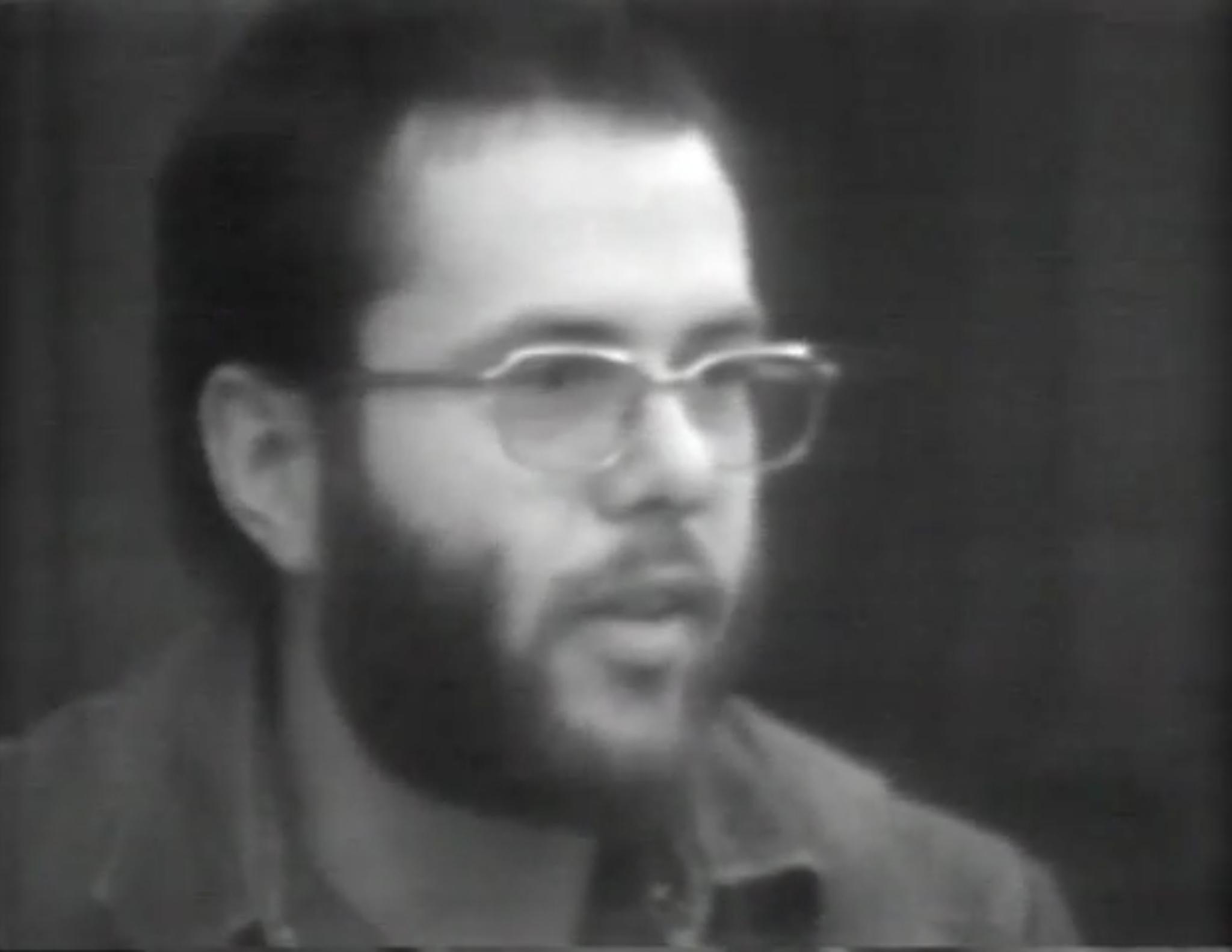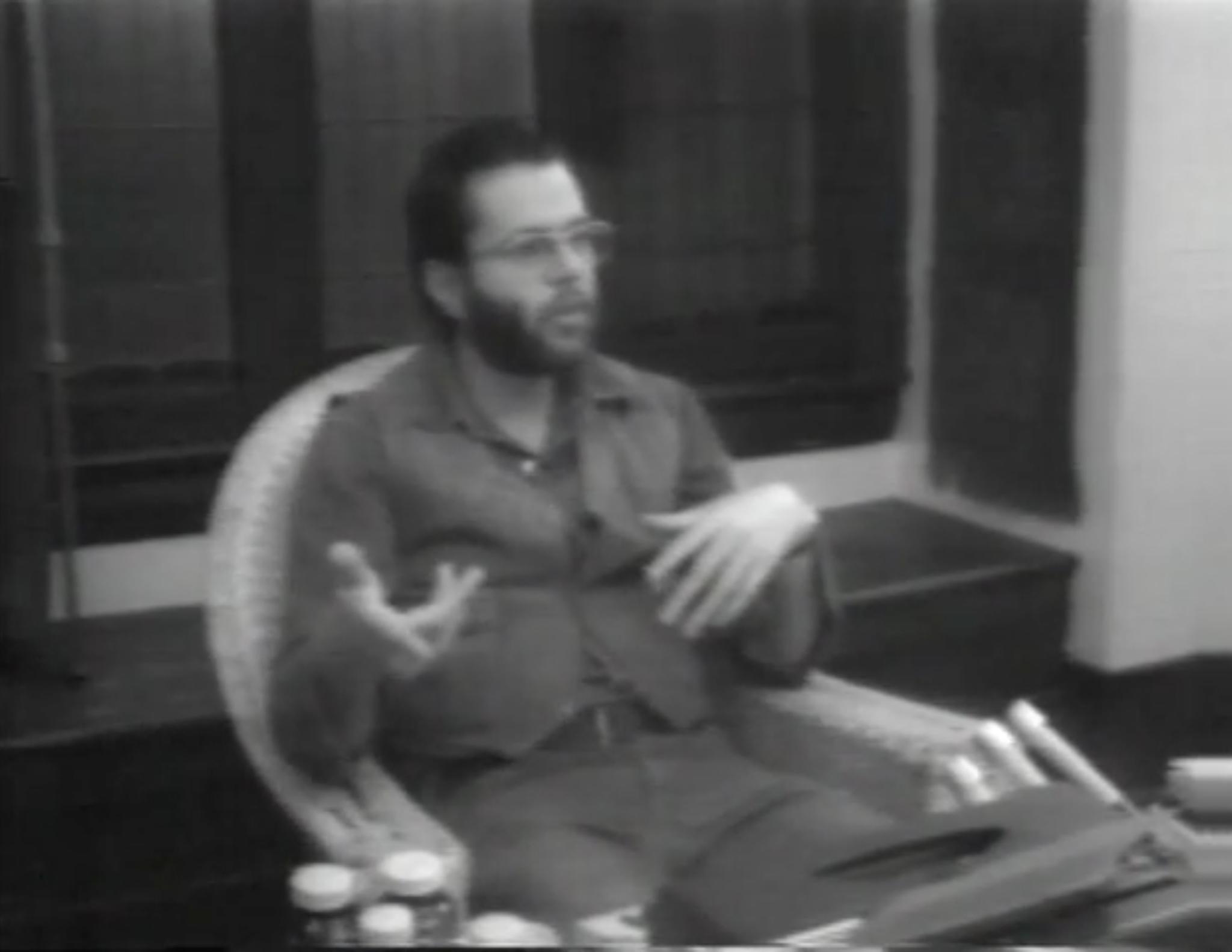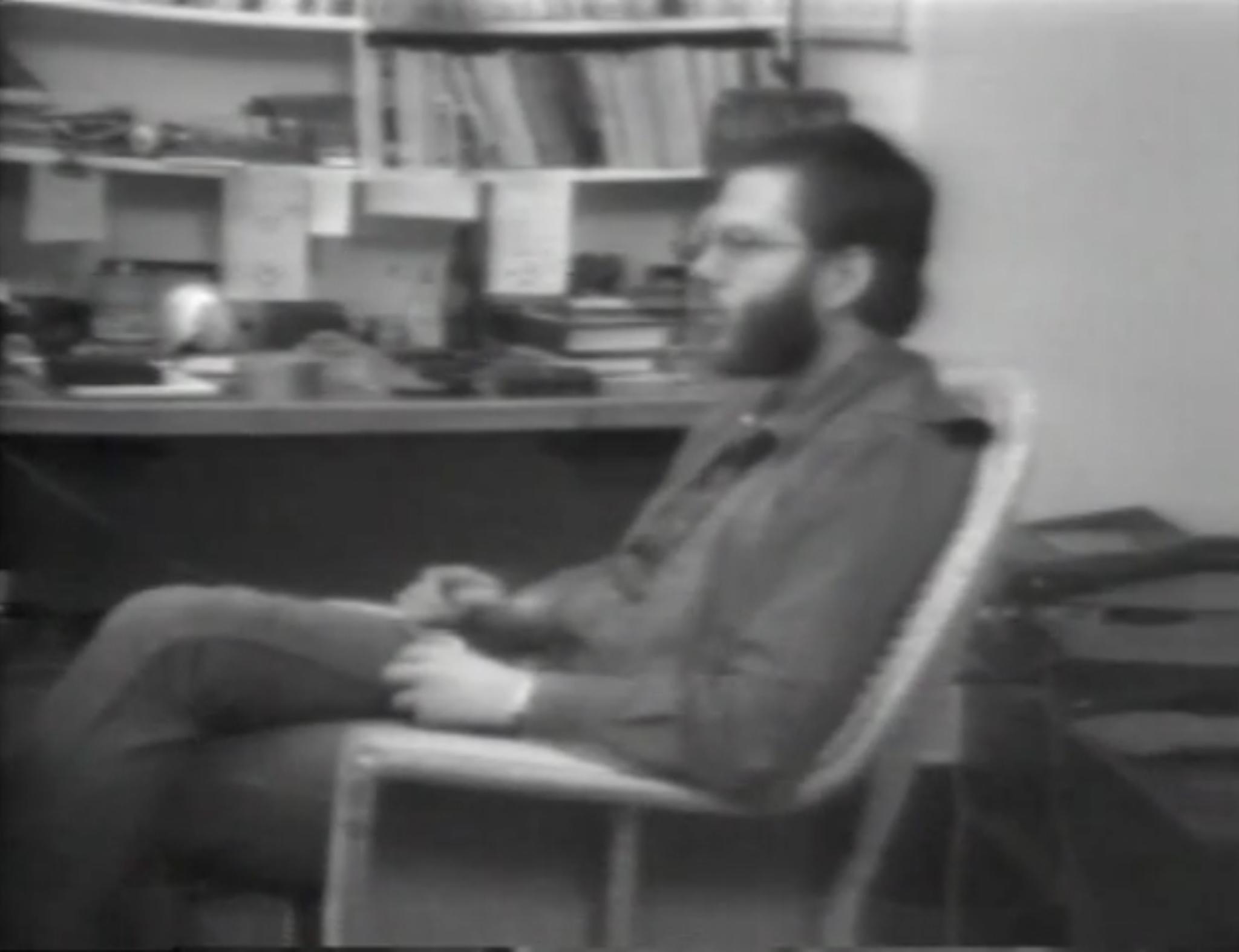
Revolve
Revolve is a landmark early example of video art by Holt. It focuses on her friend Dennis Wheeler (1948-1977), the Vancouver-born writer and filmmaker, and is an evocative meditation on illness biologically possessing the body.
The video, recorded in 1976, opens with Wheeler typing at his desk on an analog typewriter and shuffling in a classic 1970s rattan chair. Off-camera Nancy Holt asks: “how did you first find out you had leukemia?” Over the next seventy-seven minutes Wheeler describes his experiences in hospital, his chemotherapy, and the adjustment to “normal” life during a remission from the disease, which is when the tape was made. Three cameras capture his portrait in a revolving motion, showing Wheeler’s face and hands. Glimpses of the camera operators can be seen as Holt’s steady voice asks questions, and Wheeler’s environment around his desk becomes increasingly familiar with the repetitive circling. In a review the year the film was made, Richard Lorber noted: “In her sincerity and sympathy with Wheeler’s outlook Holt has avoided any treatment which might be construed as exploitative of the morbid or sensationalistic aspects of death. However, her restraint may also have inhibited a fuller exploitation of her own resources as an artist and of her medium (as demonstrated in some of her earlier works, such as the brilliant videotape Underscan).”
At times Holt edits the narrative so phrases return, and Wheeler is seen speaking the same words from different angles. He describes his six-week treatment at Vancouver General Hospital and the shock of returning to the world. This reentry Wheeler describes as “coming back from the moon”—a process requiring his “whole conceptual framework” to be reset.











